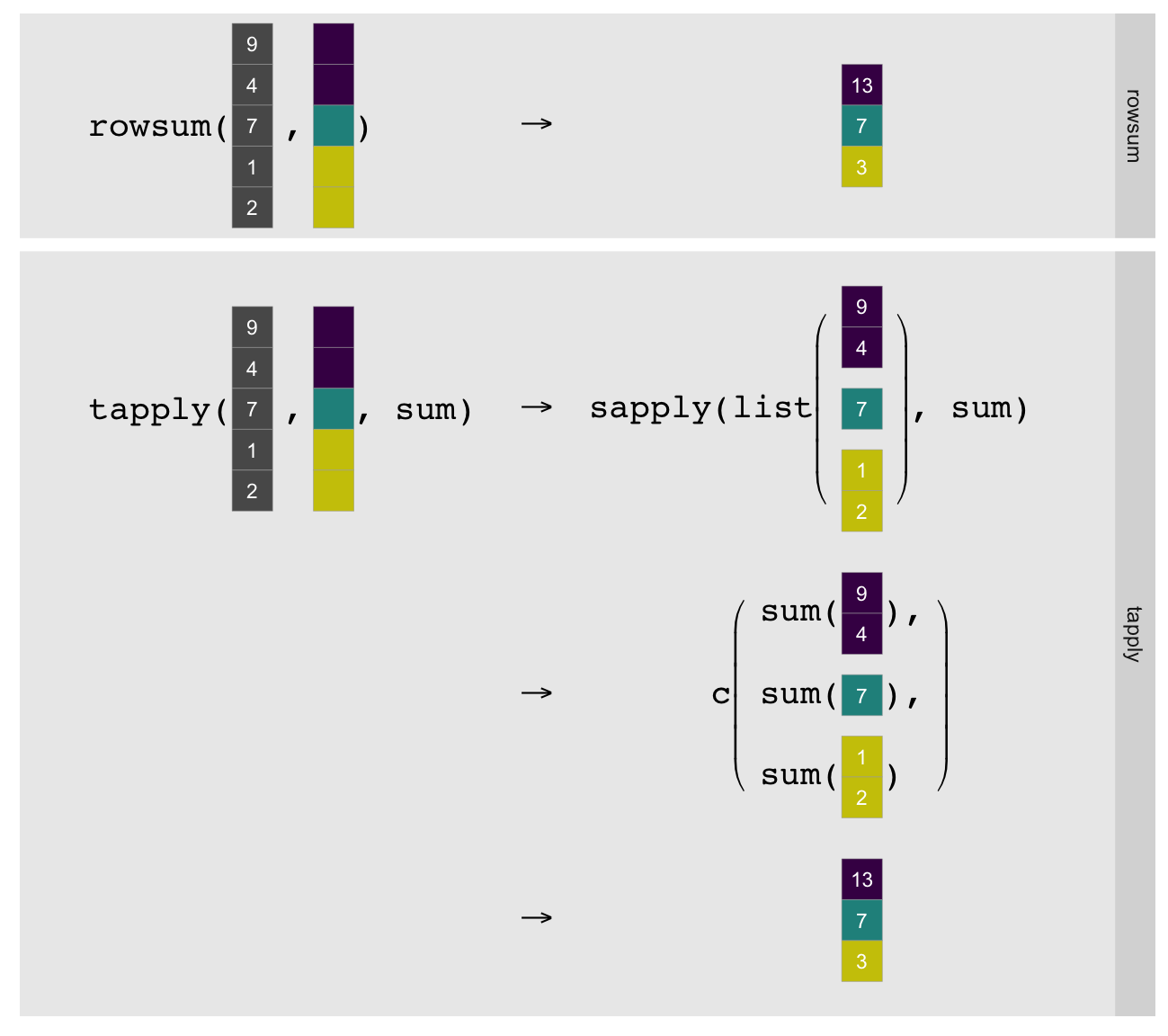

Type head(flags) to preview the first six lines (i.e. the ‘head’) of the dataset. I’ve stored the dataset in a variable called flags. Let’s jump right in so you can get a feel for how these special functions work! This dataset contains details of various nations and their flags. Throughout this lesson, we’ll use the Flags dataset from the UCI Machine Learning Repository.
#TAPLY COUNT FUNCTION SOFTWARE#
A more detailed discussion of this strategy is found in Hadley Wickham’s Journal of Statistical Software paper titled ‘The Split-Apply-Combine Strategy for Data Analysis’. These powerful functions, along with their close relatives (vapply() and tapply(), among others) offer a concise and convenient means of implementing the Split-Apply-Combine strategy for data analysis.Įach of the *apply functions will SPLIT up some data into smaller pieces, APPLY a function to each piece, then COMBINE the results.
#TAPLY COUNT FUNCTION HOW TO#
.In this lesson, you’ll learn how to use lapply() and sapply(), the two most important members of R’s *apply family of functions, also known as loop functions.Step 9: Pandas aggfuncs from scipy or numpyįinally let's check how to use aggregation functions with groupby from scipy or numpyīelow you can find a scipy example applied on Pandas groupby object: from scipy import statsĭf.groupby('year_month').agg(lambda x: stats.mode(x))Įxample for unt_nonzero method used with Pandas groupby method: import numpy as npĭf.groupby('year_month').agg(np.count_nonzero)

In the next example we will define a function which will compute the NaN values in each group: def countna(x):ĭf.groupby('year_month').agg() It's possible in Pandas to define your own aggfunc and use it with a groupby method.

Note that by default method groupby will exclude all NaN values. In this step you can find examples for all aggfunc-s applied on a DataFrame. This method returns basic information about the column: df.groupby('year_month').describe()ĭescribe returns multiple aggfunc-s like: count, mean, std, min, max: count In each step we will see examples of using each of the aggregating functions associated with Pandas groupby function. Next we are going to create new column with information - combination of the year and the month: df = pd.to_datetime(df, utc=True)ĭf = df.dt.to_period('M') We are going to create new column year_month and groupby by it: import pandas as pdĭf = pd.read_csv(f'./data/earthquakes_1965_2016_')Ĭols = In the next section we will cover all aggregation functions with simple examples. Those functions can be used with groupby in order to return statistical information about the groups.


 0 kommentar(er)
0 kommentar(er)
